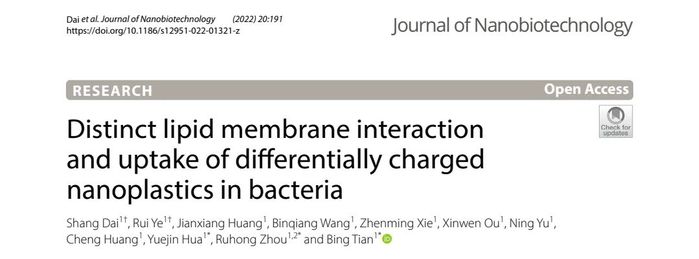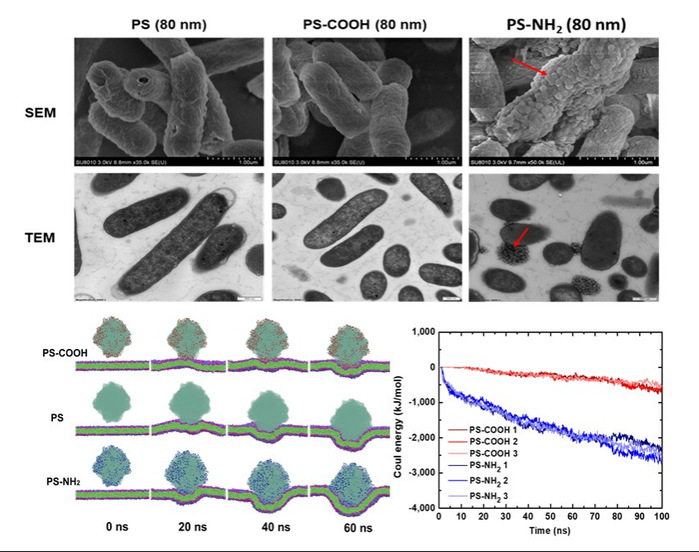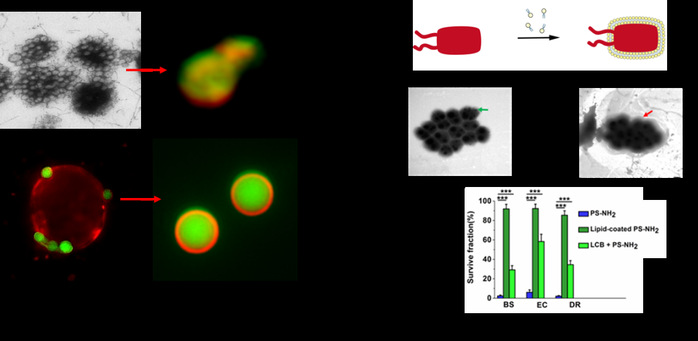
Title: Distinct lipid membrane interaction and uptake of differentially charged nanoplastics in bacteria
Shang Dai, Rui Ye, Jianxiang Huang, Binqiang Wang, Zhenming Xie, Xinwen Ou, Ning Yu, Cheng Huang, Yuejin Hua,Ruhong Zhou & Bing Tian
Abstract
Background
Nanoplastics have been recently found widely distributed in our natural environment where ubiquitously bacteria are major participants in various material cycles. Understanding how nanoplastics interact with bacterial cell membrane is critical to grasp their uptake processes as well as to analyze their associated risks in ecosystems and human microflora. However, little is known about the detailed interaction of differentially charged nanoplastics with bacteria. The present work experimentally and theoretically demonstrated that nanoplastics enter into bacteria depending on the surface charges and cell envelope structural features, and proved the shielding role of membrane lipids against nanoplastics.
Results
Positively charged polystyrene nanoplastics (PS-NH2, 80 nm) can efficiently translocate across cell membranes, while negatively charged PS (PS-COOH) and neutral PS show almost no or much less efficacy in translocation. Molecular dynamics simulations revealed that the PS-NH2 displayed more favourable electrostatic interactions with bacterial membranes and was subjected to internalisation through membrane penetration. The positively charged nanoplastics destroy cell envelope of Gram-positive B. subtilis by forming membrane pore, while enter into the Gram-negative E. coli with a relatively intact envelope. The accumulated positively charged nanoplastics conveyed more cell stress by inducing a higher level of reactive oxygen species (ROS). However, the subsequently released membrane lipid-coated nanoplastics were nearly nontoxic to cells, and like wise, stealthy bacteria wrapped up with artifical lipid layers became less sensitive to the positively charged nanoplastics, thereby illustrating that the membrane lipid can shield the strong interaction between the positively charged nanoplastics and cells.
Conclusions
Our findings elucidated the molecular mechanism of nanoplastics’ interaction and accumulation within bacteria, and implied the shielding and internalization effect of membrane lipid on toxic nanoplastics could promote bacteria for potential plastic bioremediation.
Link: https://jnanobiotechnology.biomedcentral.com/articles/10.1186/s12951-022-01321-z







